Introduction


I’m back again with my newest lens review, this time of the Voigtländer Color-Skopar 28mm f/2.8 SL II Aspherical lens for the Nikon mount, tested as usual on a Nikon D700 full-frame DSLR. Just like its twin sister lens, the Voigtländer Color-Skopar 20mm f/3.5 SL II Aspherical, this is a pancake lens with a slim, elegant design, and makes a very portable and lightweight combo with the D700 as shown below:

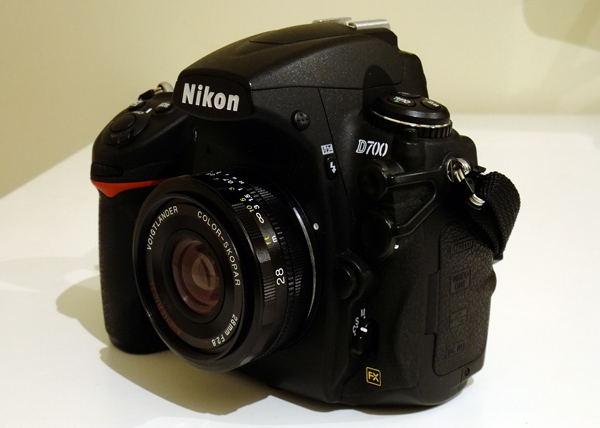
Just like its twin, the retail price of €449 doesn’t seem cheap at first, but besides being an all-metal lens it has a relatively fast maximum aperture, especially for a pancake design. Pancake lenses are particulary rare in Nikon mount, and this lens may be like a God’s send for those who appreciate shooting with this type of lenses. This lens looks so similar to the 20mm f/3.5 that I will base my description of the 28mm on that review I wrote some time ago.
The lens includes an aspherical element to reduce aberrations and distortions. Being a manual focus lens, it can be a bit limiting for you depending on your shooting style, but that’s also true for every manual focus lens such as Nikkor AI or Zeiss ZF lenses. The fact that the lens has a wide focal length reduces this limitation a bit, being very easy to focus anywhere you want.
I’ve been shooting with this lens for some months now and I have better feelings with it than those I had with the 20mm which performed badly on the full-frame sensor, and now I trust this lens for every occasion where I need to travel light. The 20mm was a sweet lens on DX, it had the perfect focal length to cover a great range of scenarios, and I used it mainly to shoot street scenes, landscapes, monuments, inside museums and churches, cafés, pretty much everything I wanted. But when I migrated to FX I wasn’t that enthusiastic with the focal length, and worse, it performed badly in the corners. So I looked forward to Cosina to release a new pancake lens with a equivalent focal length on FX, and voilà, it seemed that Cosina was listening to me and didn’t took much time for this 28mm to arrive. I was also thrilled that they increased the maximum aperture to f/2.8.
Last time I used this lens was on my summer vacations in southern Spain and I loved it, it performed so much better than the 20mm, that I was shooting at f/4 all the time in churches and museums with no regrets. The maximum aperture was also excellent when I needed to do a close up or a quick portrait, since the quality at the center of the frame is very high. It looked like I was shooting again with the 20mm on my old D300, but seemed even better! This lens was also good to shoot unnoticed among the multitude of tourists that visited the region at that time of the year, but also got a few smiles from other photographers that were curious about its diminute size. But I will describe its performance in detail below.
Technical Specifications
| Focal length | 28 mm |
| Biggest aperture | f/2.8 |
| Smallest aperture | f/22 |
| Field of vision | 74.8 degrees (on FX) |
| Weight | 180 g |
| Dimensions | 25 x 62 mm |
| Optical construction | 7 elements in 6 groups, 1 aspherical element |
| Aperture blades | 9, straight |
| Filter diameter | 52 mm |
| Minimal focus distance | 22 cm |
| Hood | LH-28N (optional) |
| Mount | AI-S, CPU integrated |
Mechanical Characteristics
| Zoom ring | n/a |
| Focus ring | All-metal, with infinity stop |
| Focus throw | 160 degrees |
| Focus motor | n/a |
| Optical stabilizer | n/a |
| Front element rotation while zooming | n/a |
| Front element rotation while focusing | No |
| Lens extension while zooming | n/a |
| Lens extension while focusing | Yes, 6 mm |
| Internal focusing | No |
Handling
Handling this lens is every bit the same as handling the 20mm, so I will basically copy-paste the same description.
The Voigtländer is a very compact lens as you can see above in the pictures, and being all-metal it’s very well built and surprisingly heavy for such size. Being a manual focus lens, probably the most important aspect is how the focus ring feels on your fingers, and it does indeed feel great. The focus ring is perfectly damped and focusing is very smooth. I have been shooting with some manual focus lenses (AI-S and Samyang) but focusing with this lens feels even better than those. It feels smooth and has a long throw of about 160 degrees for precise focusing. This is mostly useful in near distance, of course, because from about 10 meters to infinity there’s almost no need to move the focus ring again. The lens stops focusing on infinity which is great news for astrophotographers.
The less positive things about this lens is that it doesn’t have a lock on the aperture ring, therefore watch out and keep the aperture ring at f/22, otherwise you’ll get a fEE error on your LCD display. Because the lens is so tiny and there’s almost no space between the focus and aperture rings, attaching and dettaching the lens from the camera can be a bit difficult, but with a firm grip on both focus and aperture ring, along with the fixed 3mm spacer in between, it can be done but be warned that the lens gets almost glued to the camera.
Anyway, my only thumbs down goes (once again) to the front cap which gets off so easily with just a small touch. I instantly replaced that cap with a (heresy!) Canon one.
Resolution
For the resolution test I shot a near distance object and a far away building to find out if there were any visible differences in image quality between those distances. As usual, I focused with Live View and re-focused when moving the target to the corners.
The first column shows a crop of the image center, the corner crop is on the second column and the third column shows a crop of the extreme corner. Each row represents an aperture setting, from maximum to minimum in full stops. Here are the results:

The resolution at the center is already excellent straight from the maximum aperture, showing high contrast and clarity. This is always true until f/16, from which diffraction starts affecting the image and there’s a loss of contrast. The DX corner resolution is not so good wide open but is more than acceptable at f/4 and peaks at f/5.6, and keeps on high values until f/16. The extreme corners are a bit weaker at f/2.8 and appear affected greatly by vignetting, but after quick correction in post-processing it is visible that the problem is not that much the lack of sharpness. If DX corner sharpness improves greatly at f/4, the extreme corners will take one more stop to reach similar levels. But still, for very good sharpness across the frame it’s better to stop down to f/8, or f/11 if critical sharpness is needed on the extreme corners of FX.
This is great performance on very close targets, but what about “real world” where most of the time the target is at at least several meters away?

Although this target seems a bit flat in contrast, careful examination shows that there are no meaningful differences in resolution, being already excellent at f/2.8 in the center and very good in the DX corner, but not so good in the FX corner and still affected by heavy vignetting. The aperture of f/8 delivers very good resolution across the frame, just like we saw in the previous test.
In conclusion, this is a much more versatile lens than the 20mm with a broader range of useful apertures, which was to be expected from the start since 20mm is more difficult to produce than a 28mm lens, especially when we’re talking about pancake lenses, and also because the maximum aperture is higher.
Distortion
For the distortion test I shot some tiles:
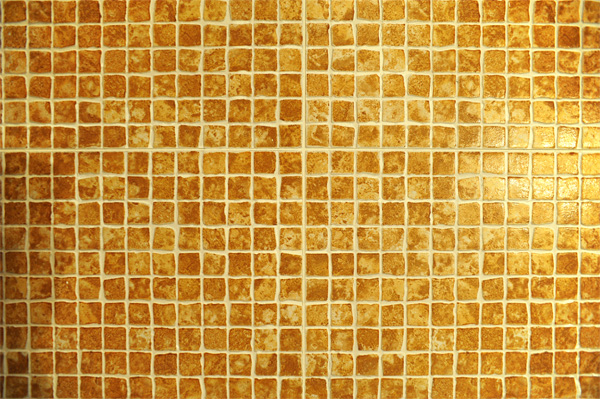
The lens distortion is well controlled. There’s a mild amount of barrel distortion but generally it’s not noticeable on most shots, and it’s easy to correct in post on architecture photos if needed.
Vignetting
In this test I shot a white wall at home using tungsten white balance.
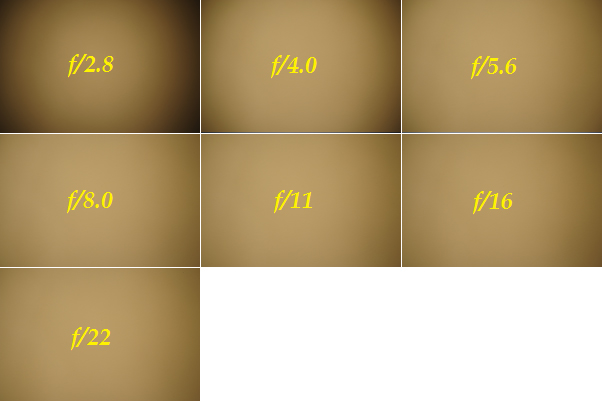
Just like it was detected previously on the resolution test, vignetting is very heavy wide open and improves significantly by f/4. From f/8 and down it generally doesn’t show up in images. Notice that this is mostly visible on shots of white walls like this. As a matter of fact, f/5.6 is already pretty much free from vignetting.
Chromatic aberrations
It was a clear bright sunny day with the sunlight reflecting on my car, and I took pictures of a area of high contrast:

The use of an aspherical element is an important feature in this lens for taking care of distortions and aberrations, and once again Cosina made an excellent job to keep aberration levels at negligible levels. From all the shots I made with this lens there wasn’t a single day I noticed any fringing issues. The lens deserves the maximum score here.
Coma
Coma is an important requirement in astrophotography and usually affects the corners of most lenses, especially wide-angle lenses and particularly old designs. I tested coma using a LED source of light in a dark room.
I put the light source at the center (first column), corner and extreme corner of the frame (second and third columns, respectively), at f/2.8 and f/4 (one stop down).
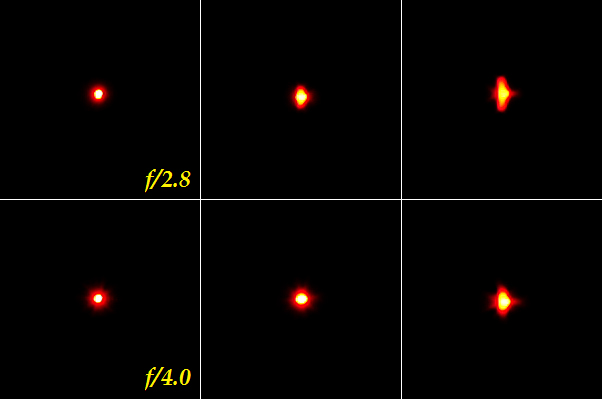
At f/2.8 the lens produces high amounts of coma even in the DX corner and much more so at the extreme corners, and doesn’t really get much better by stopping down. This is very unnattractive for astrophotographers, and if you are thinking of going out shoot the stars wide open, you better think twice or you might not like the results. This lens is awful in this regard, just like the 20mm was.
Flare
I shot several pictures on my backyard trying to get flare vestiges, and the result is as follows. I started to shoot directly against the sun, then placed the sun at one corner and then shot with the sun just outside the frame.
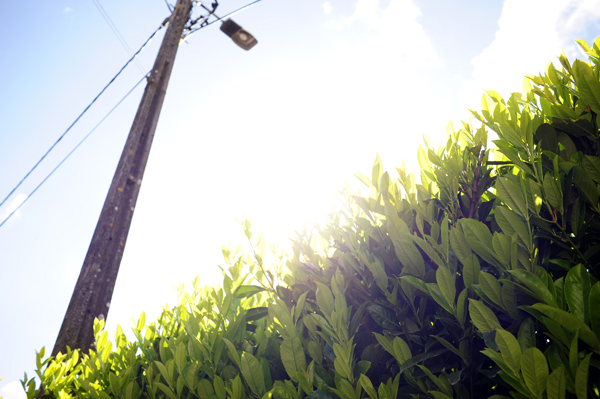 |
| Shot directly against the sun |
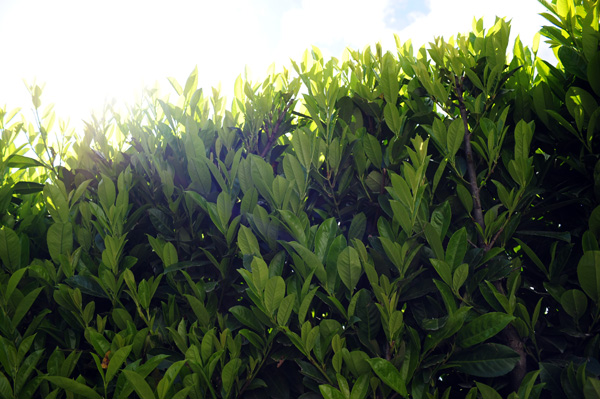 |
| Shot with the sun placed at one corner of the frame |
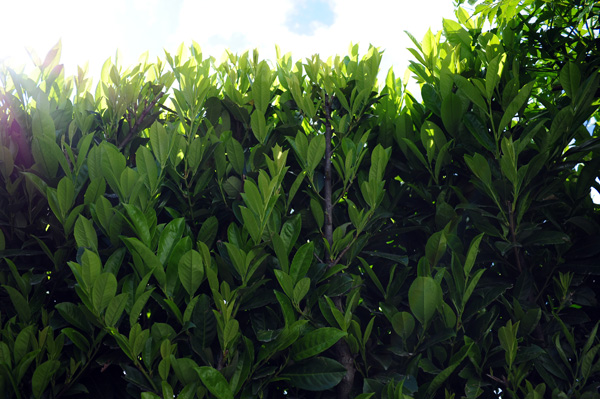 |
| Shot with the sun just outside the frame |
The Voigtländer has very good quality coatings inside and the results put it along with the best lenses I’ve used, with great flare resistance and keeping the overall contrast on high levels. There’s just a bit of veiling flare around the sun but no ghosting was detected on other parts of the frame. You just need to be a little cautious when shooting with the sun just outside the frame, and for this it might be a good idea to use the LH-28N lens hood available separately. Overall this is a very good result.
Bokeh
This is a wide angle lens and therefore the quality of the out of focus area of an image is not a primary aspect to consider, but still, since the lens has a relatively fast maximum aperture and 9 diafragm blades, one might expect acceptable renderings of out of focus highlighs. So lets see how the lens fares in this matter.
For this test I took a defocused picture at f/2.8 of the city lights and got crops of the center, corner and extreme corners. The test was repeated for f/4 and f/5.6.

The out of focus highlights are pretty circular at f/2.8 thanks to the 9 aperture blades, as expected, although the corners reveal the cats-eye distortion due to vignetting. Although circular, the highlights show pronounced edges and nervous interiors, but nevertheless it’s not distracting at this aperture when looking at the entire picture on my monitor. Closing down to f/4 reveals the outcome of the straight aperture blades and stays like this when closing down further. Generally, with this lens it’s better to shoot close-up subjects with the maximum aperture, where the center sharpness is already very good, to get the best out of focus renderings.
Macro/Close-up
The Voigtländer was capable to focus as close as 22 centimeters from the sensor plane, or about 15 centimeters from the front element. I shot an 1 Euro coin and this is what to expect at the minimum focus distance:

Summary
| Build quality | 9 | A beautifully well crafted lens, but the front cap is rubbish |
| Handling | 10 | Buttery smooth focus ring and very solid, compact lens, with CPU contacts for the automated exposure modes |
| Resolution | 8 | Excellent center sharpness, very good corners and fairly good extreme corners at moderate apertures |
| Distortion | 8 | Well controlled barrel distortion for a wide-angle lens and easily correctable if needed |
| Vignetting | 7 | Very strong wide open but improves greatly stopped down |
| Chromatic aberrations | 10 | A winner just like its 20mm sister lens |
| Coma | 6 | Very strong in the corners wide open, gets just a little better by stopping down |
| Flare | 9 | Great performance, but be most careful when the sun is just outside the frame |
| Bokeh | 5 | Circular only at f/2.8 but very nervous and pronounced edges, and gets polygonal at smaller apertures |
| Overall | 79% | A good pancake lens with very much expanded range of useful apertures for FX |
Samples
Here are a few pictures I took during my past holidays and in my backyard. Settings: native JPEG, picture control set to Landscape mode, no post-processing applied except reducing to 600 pixel width.
 |
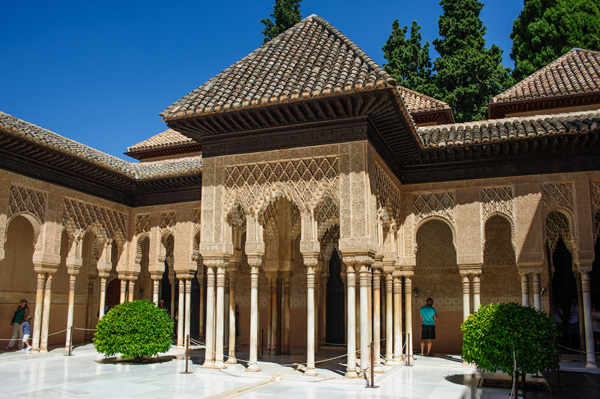 |
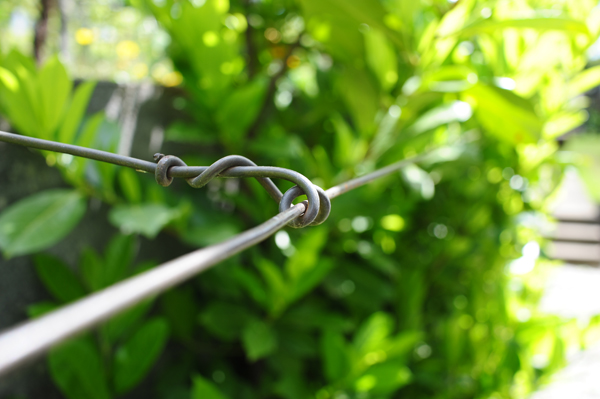 |
 |
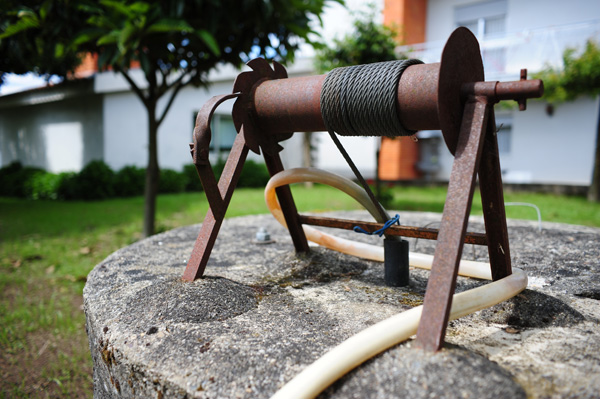 |
 |
Thanks for review, it very good review.
Great review here, thank you!! I have a Voigtländer Ultron 40/2 which I am very pleased with. The 28/2.8 would be a welcome weapon in my arsenal.
Could not resist after reding this review:) Got one too: http://jabcam.wordpress.com/2014/03/26/topic-voigtlander-color-skopar-282-8-sl-ii/
Nice review and photos you made! 🙂 It’s really a lovely lens to use with its tiny size and buttery-smooth focus ring. But I recently got a used Nikkor 16-35mm f/4 VR and the Voigt has been relegated to the drawer… They are different beasts for sure, but I think I’ll use the zoom much more, even while traveling. That said, I’m not sure I can stand selling the pancake… it’s such a lovely lens!
Jabcam, the 28 is definitely a “welcome weapon” to the 40mm. Have them both. Love them both. Sold my Nikkors (which I thought I would never do) for these two. Never looked back.
Good review!
I already own the Voigtländer Ultron 40/2 and the Voigtländer Color-Skopar 20/3.5. Both are lovely lenses. You are absolutely correct, the lenses caps are terrible and I ended buying a metal screw-in for both. Other than that, I happy with both. I am always debating if I should get one 28mm I also have a Canon EF 17-40mm F/4.0 L and I am afraid I will not use it after the novelty wears off. It is tempting, they are different animals and one fits in my pocket.
Dear Jose,
I’ve just purchased the 28mm on Nikon mount and I realized that the focus ring stiffens up a little bit on the close focus range, is this normal? Thank you very much.
Hi Konstantinos, as a matter of fact my copy had the same behaviour when I got it, but that went away with the use. Sometimes when the lens is stored for a long time and I pick it up, it stiffens a bit again, but then it goes to normal. Don’t worry, that seems to be normal 🙂
Thank you very much for your quick reply! If it is not much to ask, I have a couple of other questions… The first is about the quality of the mount; it is showing brassing after half a dozen mounting times. Second is the friction noise while focusing compared to my Zeiss 21mm . Do you have any similar experience? Thanks once again 🙂
I understand why you’re saying that, because the lens does mount very tightly with the body, more than any of the other lenses I own. Mine doesn’t show any signs of brassing, yet.
Friction noise while focusing? Hmm… not in my experience, it’s smooth like butter especially now that I’ve given regular use to it. But if you’re hearing friction noise, that may be due to sand or other dust particles that got into the mechanism.
I put two Nikon lens caps on mine. Problems solved. Much better…………….
Pingback: In Malaysia Now : Voigtlander 28mm f2.8 Color Skopar SL II N Lens
Outstanding lens. No complaints. Also really like the 40mm Ultron. Love Voigt glass……